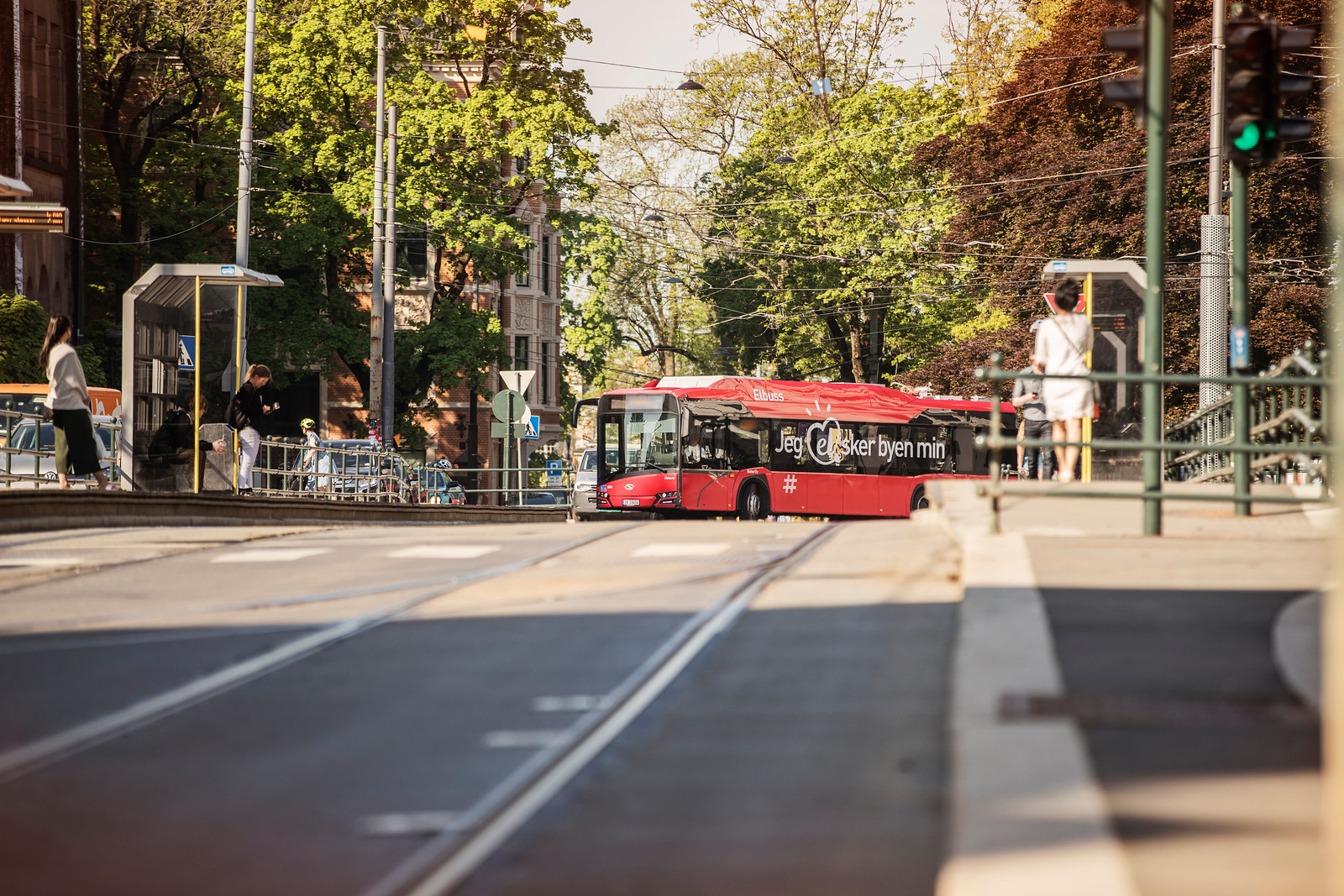-
Public transport in Oslo
- From 2007 to 2017 the number of public transport trips grew by 63 per cent, from 228 million to 371 million trips.
- In 2017 Oslo experienced growth in public transport of 6.1 per cent.
- In 2017 56 per cent of public transport operated on renewable energy.
- In 2020 public transport in the capital region will operate using only renewable energy.
- By 2028 all public transport in the capital region will be emission-free.
Fewer emissions – more passenger traffic
Public transport is a response to how we ensure efficient negotiability, but also how emissions from passenger traffic may be reduced.
Cars are responsible for the bulk of emissions that arise from passenger traffic, while greenhouse gas emissions from public transport constitute approximately four per cent. In recent years in Oslo more people have travelled by public transport than by car.
Why Oslo was named European Green Capital

Fossil fuel-free in 2020
In 2020 public transport in Oslo will operate only using renewable energy. At that point all city buses will have EURO VI standard engines, which produce significantly less noise and pollution.
The bus fleet is responsible for more than 90 per cent of Ruter's greenhouse gas emissions, while ferries are responsible for the remainder.
In 2017 56 per cent of public transport operated on renewable energy. At the time, 44 per cent of bus production and seven per cent of the ferries' energy consumption was renewable.
Emission-free in 2028
All public transport in the capital region shall be emission-free by 2028. This will benefit the climate, local communities, urban development and the inhabitants' health. In the longer term, emission free solutions will also be the most cost-efficient. Trams and the metro already run on renewable electricity, and electrification of buses and ferries in Oslo is under way.
Over the past seven years Ruter has tested five hydrogen buses, with vapour as the sole emission. In 2017 ten electric minivans were put into operation at Romerike. The same year a two-year pilot started with six electric buses.
How electrification is implemented
Electric buses: In 2019, 70 new electric buses that will operate key bus routes in Oslo will arrive. This will make Norway the Nordic region's leading electric bus capital. Overall, the capital region will have 115 electric buses in the course of the year. All of the 1,200 buses that operate Ruter's routes will be emission-free by 2028.
The Nesodden ferries: All of the three vessels between Oslo and Nesodden will be electrified in 2019. This is Norway largest car-free passenger link, with 2.7 of a total of 4.5 million ferry trips. When these three vessels are electric, 70 per cent of ferry trips will be emission-free.
The island ferries from Aker brygge to the islands in the inner Oslo fjord: All of the island ferries will be electric in 2021. We also aim to electrify the high-speed ferries by 2024, so that all ferry transport becomes emission-free.
Special transport: Minivans and taxis that are under contract with Ruter will be emission free in 2022.

Events in 2019
In 2019 several conferences, launches and environmental events will be arranged.
Contact and partnership
Would you like to know more about Oslo as Green Capital or would you like to make an appointment for a field study?
Get in touch to make an appointment for a field study
Questions for Ruter?
Feel free to send an e-mail to post@ruter.no.